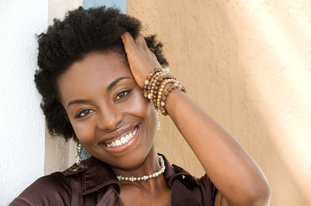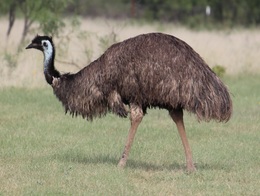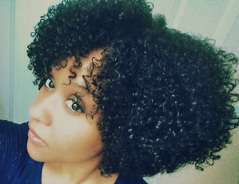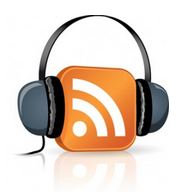
For your body to perform optimally and stay healthy, you need to take in the right nutrients on a daily basis. Just like your body, your hair too needs a daily dose of vital minerals for it to grow properly. Otherwise,your hair will grow dull and, within time, start breaking.
One of the vital, but little talked about, minerals that your hair needs to obtain and remain healthy are magnesium. In this article, we will discuss why magnesium is needed for your hair to grow properly.It also provides tips on how you can incorporate this mineral into your daily life. Lets get started! It Great For Your Body Cells Magnesium comes fourth on the list of most abundant minerals in the body. The mineral is an essential electrolyte responsible for more than 300 biochemical reactions. This naturally occurring substance basically works to help body cells produce and store energy. So, you might be wondering what does that have to do with hair growth. Well, it means that without any magnesium in your body all of your body cells would die. All of the cells in your body including those lining the hair follicles, therefore, need the right supply of magnesium for them to remain healthy. 
It Is Very Nourishing For Your Scalp
Hair loss is a chain reaction that ends with an inflamed scalp. As long as the scalp is healthy then the hair strands attached to it remains healthy. Magnesium is known to detoxify and cleanse the dermis and this also applies to the scalp. It is also very effective in relieving and treating allergic reactions. Keep in mind; some of these reactions have been known to lead to excessive hair loss. By using magnesium oil on your scalp, you are virtually guaranteeing that you are not only nourishing your hair follicles, but also ensuring that your scalp stays healthy. So what can you do to ensure that you get enough magnesium to promote hair growth? Your first course of action should be to incorporate magnesium rich foods in your diet. What type of foods? So, glad you asked.
Eating these foods and other foods rich in magnesium on a daily basis ensures that your body gets a constant supply of this important nutrient. Because cooking and refining lead to magnesium loss, it is always advisable to eat the magnesium rich foods raw whenever possible. 
Another good option would be to apply magnesium oil to your scalp and hair. If you are particularly concerned about your hair due to hair loss, you might want to not only apply magnesium oil to your hair and scalp. Step it up a notch and be sureto eat a magnesium rich diet because it will work great for your hair.
It is worth noting that because your hair is not served by major blood vessels it is highly likely that your hair is not getting enough magnesium. How do you know for sure? Well, if your hairlooks frail, is growing slowly or even greying faster or prematurely, then you might not be getting enough magnesium. Other Health Benefits of Magnesium
If you have always wondered why magnesium is needed for your hair to grow, now you have your answer. It is up to you now to take the right steps and ensure that your hair and bodyget enough magnesium on a daily basis.If you follow this advice, you will enjoy good health and a long and healthy mane as well.
5 Comments

I had never heard of Emu Oil until a few weeks ago when someone wrote to me asking about it. I decided to carry out some research. My sources are at the bottom of this blog.
What is an emu? An emu is an indigenous flightless Australian bird. The moment I read this description I thought of a chicken so I googled for images and voila – see the images that are part of this blog. It looks more like an ostrich than a chicken. Where do they harvest emu oil from? The emu bird’s back is made of a thick layer of fat (adipose tissue) designed to protect it from the Australian sun as well as cushioning during an attack. When this fat is extracted it is distilled to remove proteins, bacteria and other particles leaving emu oil as it is commercially sold. This is an important difference compared to all other oils I have ever used or written about – they are all vegetable oils,on the other hand, emu is derived from an animal. What does emu oil look like? The exact colour and consistency of emu oil depends on the bird’s diet. It’s a white/off-white solid at low temperatures but quickly melts at temperatures above 22°C (72°F) to form a yellow liquid. The viscosity of emu oil at any given temperature varies depending on the diet of the bird it was harvested from. 
What characteristics does emu oil have?
According to online sources it’s:
For those that have thin or thinning hair the last benefit makes emu oil especially attractive. Unfortunately, many of the claimed benefits are empirical not scientific. Emu oil has not been scientifically tested rigorously enough to make the claims therefore its risks and benefits are currently not that well understood. The biggest proponents of emu oil’s health benefits sell it so it’s hard to tell how genuine their claims are. Emu oil has been fraudulently promoted as a health supplement when it shouldn’t be due to a lack of data backing up claims of any health benefits. According to the FDA website, “FDA determined that a pure emu oil product marketed to treat or cure a wide range of diseases was an unapproved drug. Its marketer had never submitted to FDA data to support the product's safe and effective use.” Should you try emu oil on your hair and skin? Why not? It probably won’t do you any harm so it could be worth a try to see whether your hair benefits from it. As with any oil, you would have to use it for a few months to notice a difference, if any. Where can you get emu oil? There are a variety of online sources selling it but I can’t prove how genuine their emu oil is. If you’ve ever used emu oil and have an opinion on it, please share! References: https://en.wikipedia.org/wiki/Emu_oil http://www.emu-oil-well.co.uk/faq Emu Oil: The Secret to Cate Blanchett's flawless complexion?
Many of us were brought up to believe greasing one’s scalp with “hair food”, such as Blue Magic, Sulfur 8 or any other petrolatum-based grease was essential for maintaining healthy hair. However, many in the natural hair community now argue that greasing your scalp is not essential. So is it? It depends…
Day-to-Day Management Generally, a clean and healthy scalp does not need to be greased to stay soft, pliable and well suited for hair growth. Sebum, the oil naturally produced by the scalp lubricates the scalp on an on-going basis. Importantly, unlike skin, the scalp is not constantly chaffing against clothing or rubbing against furniture so it doesn’t need to be moisturized as intensely or as regularly as skin does. Dry Scalps The above said, just as some people have drier skin than others, some scalps are more dry than others. The dryness of one’s scalp can be impacted by diet and weather. Whatever the case, if your scalp doesn’t seem to lubricate itself and perhaps gets all dry, ashy or dandruff-ridden then it certainly doesn’t hurt to oil it. If your scalp is dry, don’t use a thick or heavy grease; choose a light, nutrient-rich oil to rub into your scalp.
When In Plaits If your hair has just been plaited/braided then it might be useful to oil your scalp to prevent bumps and rashes from forming where the root has been pulled. I personally have a very sensitive scalp; even with minimal pulling my scalp gets sore and bumpy so I oil the scalp religiously for about a week after its been plaited using Neno Natural’s Hair Growth Stimulator when I have just had braids installed. After a week the new growth compensates for the pulling my scalp endured. Hair Growth Last but not least, because the scalp is so thin, you can promote the delivery of oxygen and nutrients to the scalp to help hair grow by massaging it with an oil + essential oil blend. I have quite a few recipes that you can blend yourself. https://www.youtube.com/playlist?list=PLu2772_DbH-LWFfnvzHn-uN6bw4LgX4_b What do you think about greasing the scalp? Is it essential for you? 
Get your FREE ebook on How To Grow Long, Healthy Natural Kinky or Curly Hair. You might also like: Working with Essential Oils - Understanding Dilution 
I get a lot of emails from mums and grandmothers with concerns about hair growth so I decided to go straight to the root of the issue – pun not intended.
You are what you eat. A healthy body including fabulous hair and skin is all down to the content of your diet. An affinity for healthy foods is best taught at a very early age. Now that our son - Little Zeusy - is 4.5 months old we’re thinking hard about when and how to introduce solids. Given women have been having babies for centuries you’d be forgiven for thinking that issues regarding the introduction of solids would be pretty decided by now but scientists are very much “still working on it”. I’m getting a lot of conflicting advice. Rather than focus exclusively on the science, I’ve decided to balance the science with my own intuition and stories from other mums’ experiences. What are the outcomes I want for Little Zeusy, ideally?
What I Learnt at the NCT Workshop on Introducing Solids? When to introduce solids? Experts recommend you wait until your baby is 6 months old or approaching 6-months or is showing the following 3 signals:
Baby-led vs. Parent-led (Pieces of food vs. Pureed food) Baby-led weaning basically involves giving your baby real food. You don’t mush it up for the most part, you simply cook it or, if it’s soft e.g. avocado or banana, cut it up into pieces and let the baby feed himself. The session I attended had an experienced mum overseeing how it was conducted and I was convinced by her story: she gave birth to a set of twins when her first two children were 4 and 2 years old. She weaned her first two children by pureeing things initially but when she had the twins she just fed them whatever her other kids were eating. She says the results were amazing: her twins accepted a much wider variety of food over time and to-date her first child who is 12 years old still struggles with vegetables. The most amazing thing she found is that her twins (now 8 years old) just stop eating when they are full because that’s what they’ve grown up to do. Even if they are eating a food they like such as cake once they’re full they’ll simply stop eating. I would never have believed this to be true if I didn’t live with that kind of person: my husband, Harry, can leave 3 crisps in a packet, roll it up, clip it and put it back in the cupboard. I was flabbergasted the first time I found a bag of crisps with literally 3 crisps in it. When I asked why he bothered to leave them he simply said, “I was full.” Ultimately, letting a child feed himself is like breastfeeding: the child stops when they have had enough. When a parent feeds their child they want to clear the plate or empty the bottle whether the baby is full or not, that’s natural. What time of the day to introduce foods? She suggested introducing new foods Monday to Friday in the morning when GP surgeries are open and A&E is better staffed in case there is an allergic reaction. I think this is overly cautious but in principle I would agree. We’ll probably do it in the evening so my husband can take part. Given he’s a paediatrician it should be okay. Commercially packed food or homemade food? Nowadays you have so much pre-packed food in sachets, cans, etc. “Ella’s” is all the rage. The main problem I have with these foods is that they’re NOT food as you would have at a regular meal. Apparently some babies that become accustomed to foods from sachets where they squeeze the pack to get the food out can reject food that doesn’t come in something that they squeeze out. To solve this problem nowadays you can buy empty “squeezey” satchets to fill up with mashed up food yourself… A second problem is that when you are weaning a baby they need very little food; however, these sachets/jars expire within about 48 hours of opening them, this means unless you’re making the baby finish the food (which you shouldn’t do, always stop when the baby indicates he’s full) you’ll be throwing loads away. I see the value of pre-packed food if you’re travelling somewhere but not as a lifestyle choice. Personally, I’m planning not to buy any at all. It’s a very unnecessary expense and isn’t in agreement with the mostly baby-led weaning my husband and I want to try and follow. Raw or cooked? Apparently, most food should be baked, steamed or boiled initially to reduce choking risk. I was going to let the baby suck on raw carrots but apparently this isn’t advised due to the choking risk. I’ll do more research on this. Sweet vs. Savoury? Because breast milk is sweet, babies are more likely to accept sweeter foods, e.g. parsnips than savoury foods. However, someone I know says she’s worked with some babies that rejected savoury foods because the weaning process focused too much on sweet foods. One set of twins she cares for only accept savoury foods if they are dipped in a sweet food first. Ultimately, the weaning process needs to be slow and gradual. Breast milk or formula is meant to be the primary source of food for the first year of life and up until the 6-month point provides everything the baby needs from a nutrient perspective. There is a lot of new information coming my way right now but I’d like to know your experience. What worked and what did not work when it came to introducing food to your baby? 
Get your FREE ebook on How To Grow Long, Healthy Natural Kinky or Curly Hair. You might also like: Working with Essential Oils - Understanding Dilution
If you, like me, have ever taken vitamin supplements to help with healthy hair growth you will probably have already heard about the “B-vitamins.” These are a group of essential nutrients which are well renowned for health in general, but hair in particular. Each of the 8 vitamins have a number after the B.
Some of the vitamins are better known by their other name, like folic acid (B9), whereas others are better known by the number, e.g. vitamin B12. They are:
(If anyone knows what became of B4, B8, B10 or B11 then leave a comment below!) These vitamins play a crucial role in the production and maintenance of proteins in the body. Since your hair is a made from a protein (keratin) these vitamins are vital for healthy hair. I already wrote a blog about the best foods for natural hair growth and strength but to summarize you get many of the B vitamins in eggs, milk, rice and whole grains as well as poultry meat and offal such as kidney, liver or tripe. The main hair benefits of B vitamins include:
One reason for their role in hair growth is that folic acid and vitamin B12 are important for healthy red blood cells which carry oxygen around the body and help everything grow efficiently. Dandruff and dry scalp have been linked to B vitamin deficiency and certain people with vitamin B7 deficiency get severe dermatitis (skin inflammation) and hair loss. So if you have these issues, take a closer look at your diet, and if unsure seek help from a dietician or specialist nutritional expert. Eggs & milk for breakfast anyone? Yes sirree. Bring on those whole oats too! 
Get your FREE ebook on How To Grow Long, Healthy Natural Black Hair. 
A short while ago I wrote about How To Make Homemade Aloe Vera Juice For Natural Hair. My recipe shows you how to extract the gel and then how to dilute it to make the juice version.
A few people asked how you can use the aloe vera gel or the juice on hair. Here are 5 ways that you can use aloe vera juice or gel. (If you want to know the benefits of aloe vera juice click the link to the blog at the bottom of this blog): 1. Pre-poo Before you shampoo your hair apply aloe vera to your hair and scalp. This will help to condition and moisturize the hair as well as soothe an itchy scalp. You can enhance the pre-poo formulation with essential oils. Let the pre-poo blend sit for 5-10 minutes before you rinse it out. 2. Shampoo Add aloe vera juice to a store-bought shampoo to get it's moisturizing benefits or use it instead of water when you make a DIY shampoo recipe. This is especially useful if the shampoos that you can find in your local area dry your hair out. Only add the aloe vera to the portion of shampoo you are about to use. Adding any extras to a whole hair product bottle can destabilize the lot! 3. Conditioner You can use this to dilute a very thick conditioner instead of water. In so doing you will get the conditioning benefits of aloe vera juice too. 4. Scalp soother If you have an itchy scalp or if your scalp is inflammed or sore for some reason apply aloe vera to the affected area and you should see a difference. Obviously if it is a serious issue you need to see a doctor. 5. Daily spritz base Instead of spritzing with water use aloe vera. Note that if you decided to use aloe vera juice with oils they won't blend but in the new year I will teach you how you can emulsify the two so that they do blend. 
If you are wondering what the benefits of aloe vera are, then you will like: Get your FREE ebook on How To Grow Long, Healthy Natural Kinky or Curly Hair. 
Aloe vera is a stemless thorny plant with thick, fleshy green leaves. It can be purchased in various forms including as an oil, a gel, a juice/liquid or even as a powder. You can also just buy a little aloe vera plant and extract the gel yourself.
I used to keep an aloe vera plant in my kitchen to soothe any burns very quickly. It is very effective in this function. The healing properties of aloe vera have been known for centuries. Specifically these are the benefits of aloe vera for hair: 
To derive the greatest benefit it is best to get the gel straight from the plant, however, the liquid, store-bought form carries most of the properties. The main difference is that the oils from the plant tend not to be found in the liquid version. The powder, if it is pure and unmixed with any other powder ingredients, will be just as beneficial as the liquid type. Importantly for mixtresses: buy aloe vera that’s been preserved for your DIY haircare recipes otherwise you could get serious contamination issues with your products. If you will extract the gel from the plant yourself extract just the amount you need to use on that day and of course, preserve your product so that it doesn’t rot or refrigerate the gel and use it within a couple of weeks. 
Get your FREE ebook on How To Grow Long, Healthy Natural Kinky or Curly Hair.
I tried my Clay Mask Recipe For Natural Hair with both rhassoul clay and bentonite clay. These are my conclusions:
Minerals and nutrients Rhassoul clay has more than bentonite clay Moisturising effect on hair Using my clay mask recipe both make the hair feel exactly the same once washed out. However, before you wash them off the bentonite clay feels as though it's having a more nourishing and softening effect. This difference goes away once it's fully rinsed off. Detangling effect Once you've washed both off you will find that the rhassoul clay treatment mask has detangled hair better than if you use bentonite Easy of mixing The bentonite clay forms a smooth mixture with water / aloe juice than bentonite clay. bentonite clay takes longer to get smooth Recommendation: If you want to choose one go with rhassoul clay, however, I would try both to see which one has a better impact on your hair. 

Rhassoul or ghassoul is a natural mineral clay mined in the Atlas Mountains of Morocco.
Rhassoul is rich in silicon, iron, magnesium, potassium, sodium and lithium. If a hair recipe calls for rhassoul clay you can use bentonite clay as an alternative. You may find that your particular type of hair reacts better to one clay rather than the other. Benefits of rhassoul
You might also like: How To Make A Rhassoul Or Bentonite Clay Mask For Natural Hair

Bentonite clay is an odorless, non-staining, impure clay that mostly consists of montmorillonite. It feels very fine and “velvety” to touch. Bentonite is formed from a reaction between volcanic ash and weather elements including water.
Bentonite can be found in several areas around the world but the greatest concentration of bentonite is found in the Great Plains area of North America. The different types of bentonite are each named after the dominant element: sodium bentonite, calcium bentonite, potassium bentonite, aluminum bentonite and so on. A high quality bentonite clay should be gray or cream. A white powder would suggest it’s been bleached or over-processed in some other way. Bentonite is useful for
Don’t store or mix bentonite in a metal dish as its effectiveness may be reduced. Use glass or plastic. Importantly, note that clays can dry hair out so don’t use clays too frequently; once every four to six weeks should be enough to enjoy the benefits. You might also like: How To Make A Rhassoul Or Bentonite Clay Mask For Natural Hair
|
I now blog about wealth creation - so if you have any money questions meet me there, you can do all sorts of cool things like leave me a voicemail.
By Heather Katsonga-Woodward
I was a natural hair blogger and mixtress living between London & Chicago from 2012 to 2017. I always thought I was 4C but some say 4B; images below - you decide! Heather xx Categories
All
Archives
November 2016
|



























